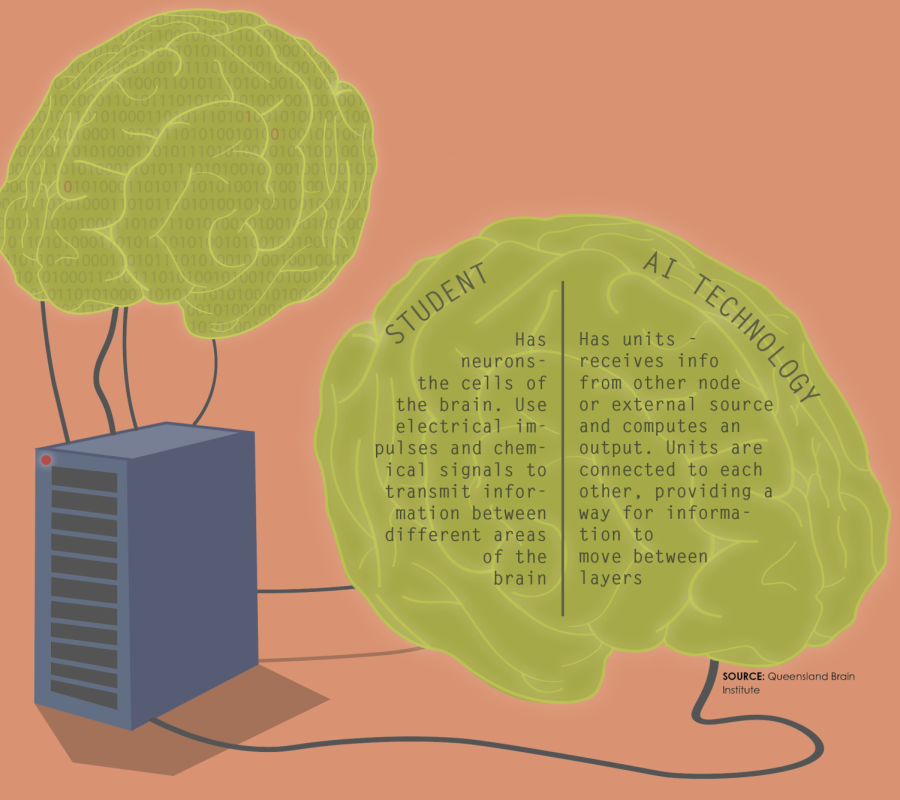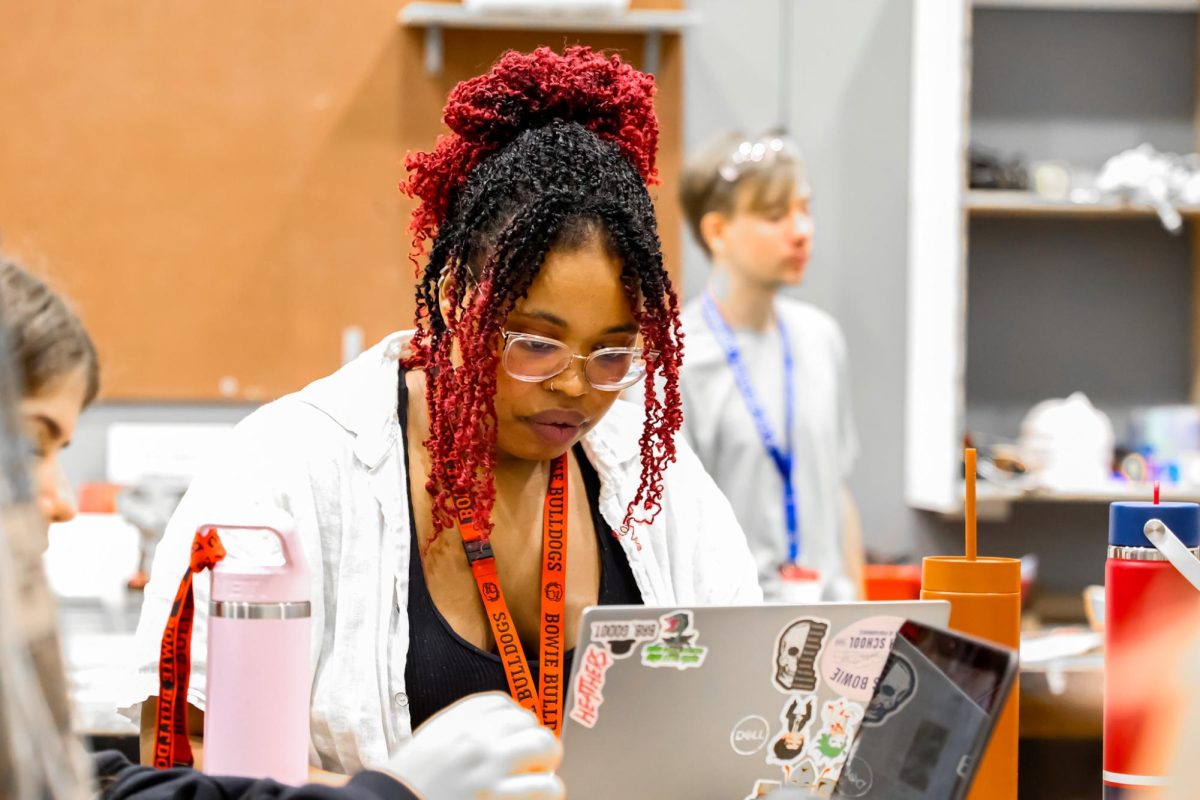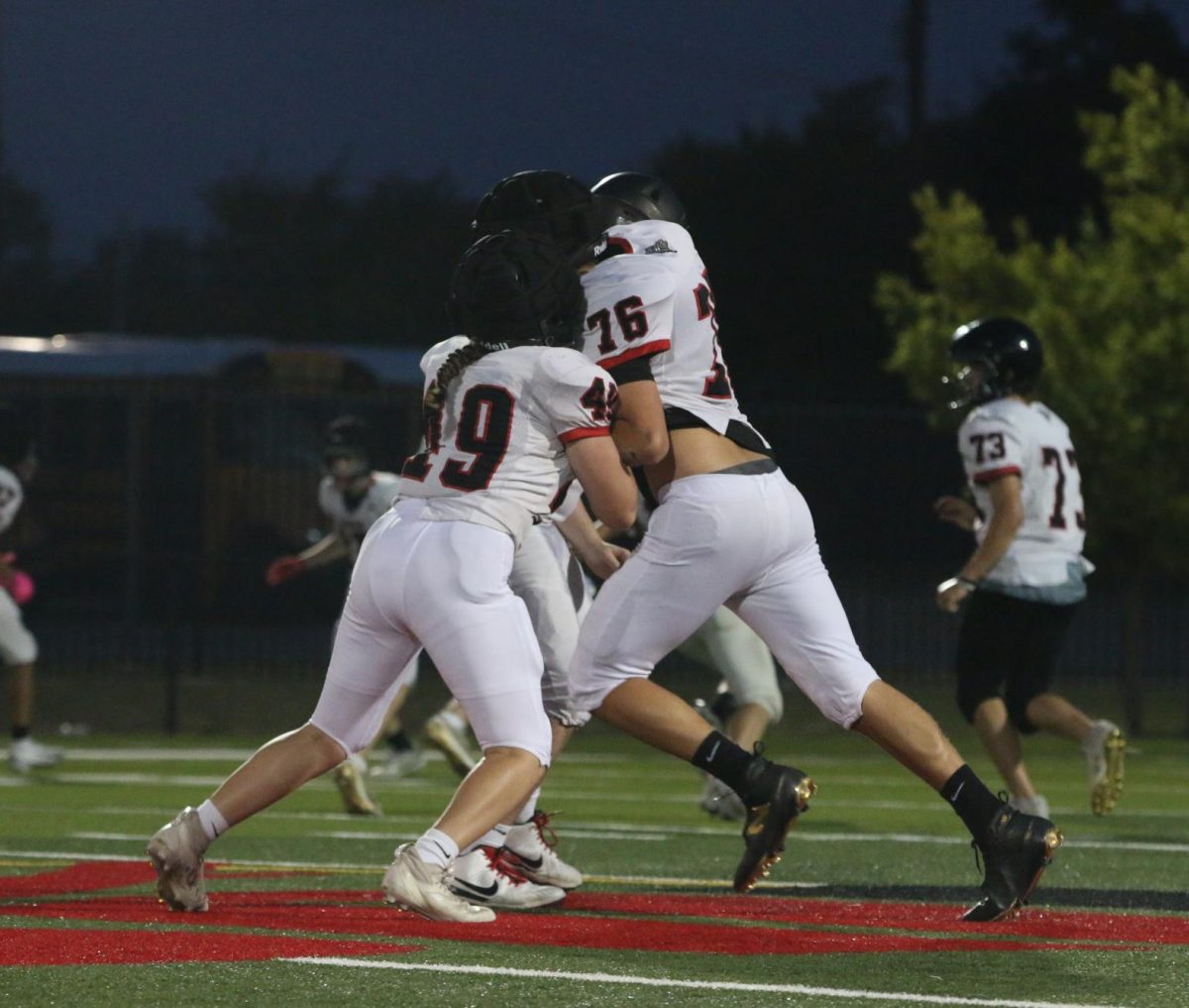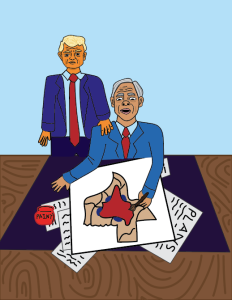AI is rewiring education
Growing popularity and use of chatbots initiate new discussions
On November 30, 2022, OpenAI released an AI language model free to the public named ChatGPT. The chatbot uses deep learning techniques to generate human-like responses to text inputs, creating the feeling of having a fluent conversation for users. The chatbot additionally is able to write essays based on prompts given by users.
March 9, 2023
As she grades her class’ final essays, an English teacher comes across one essay that seems too perfect. She double checks the name at the top of the page and concludes this is out of character for this particular student. She checks the other essays to see if it was plagiarized from another student, but can not find anything. She confronts her student the next day. When pressured, the students revealed they used an AI program to complete the essay for them.
On November 30, 2022, OpenAI released an AI language model free to the public named ChatGPT. The chatbot uses deep learning techniques to generate human-like responses to text inputs, creating the feeling of having a fluent conversation for users. The chatbot additionally is able to write essays based on prompts given by users.
“I work using a deep learning technique called transformer-based architecture, which is trained on a massive dataset of text,” ChatGPT said*. “During training, I learn to predict the next word in a sentence based on the context of the words that come before it. When you ask me a question or provide me with text, I generate a response by considering the context of input and selecting the most likely next word.”
The bot is able to use numerous sources to give users an original response.
“My training data includes a diverse range of texts, such as books, websites, and scientific papers, so I have the ability to generate responses on a wide range of topics and in different styles of writing,” ChatGPT said.
Since the bot produces an original response, through a combination of multiple sources, many plagiarism detectors can not detect the artificial work. This opens a door for students to use AI as another source of cheating on assignments.
“It is possible for high school students to present work as one’s own, though it was generated entirely by me or another AI tool,” ChatGPT said.
With this, there comes an argument that using an AI to complete school assignments is not technically cheating since the response students are plagiarizing can not be copyrighted. Makayla Schmuck teaches computer science and web development.
“I believe this is a poorly phrased argument for cheating,” Schmuck said. “It is true that AI generated work cannot be plagiarized because it legally cannot be copyrighted. However, plagiarism is not the only form of cheating. This is why we have the term for “academic integrity” and having accountability for your work, not the work of others, or in this case the work of a bot.”
According to the Bowie Academic Integrity Policy, section 2, plagiarism is the unauthorized usage of “passages, materials, words, or ideas that come from someone or something else,” without properly citing the source. As stated more specifically in section 2a, this includes copying “text (ideas, words or syntax) or other materials from the internet, book, article, computer code, or other source” without properly citing.
“Presenting work as one’s own that has been generated entirely by an AI tool, without proper citation or acknowledgment of the source, constitutes academic dishonesty,” ChatGPT said. “It is the responsibility of students to ensure that their work is original and properly cited, regardless of whether it was generated with the help of an AI tool or not.”
The use of an AI to complete work by a student mitigates the entire point of why the work was given to the student in the first place.
“If a student isn’t doing their own work, it is prohibiting them from learning which is not what school is designed to do,” senior Riley Peterson said.
It’s important to contemplate submitting work from another source in place of one’s own work, whether or not it is AI.

“It is crucial for students to develop their critical thinking, problem-solving and writing skills, and to understand the material they are learning,” ChatGPT said. “The goal of education is to gain knowledge and develop a deep understanding of concepts, not just to complete assignments. Using me or any other AI tool as a shortcut to completing schoolwork goes against the spirit of education and can ultimately hinder a student’s personal and academic growth.”
Though the use of artificial intelligence as a means of cheating on academic assignments is not an entirely new problem, it has become increasingly more common with the introduction of ChatGPT and other AI’s that are free to the public.
“Ultimately, there will always be someone somewhere with ill intent who will exploit something for their own gain, and realistically you can never catch every single one,” Schmuck said.
Then comes the concern of how to handle the potentially growing issue.
“The goal here would be to mitigate as much of this issue as possible,” Schmuck said. “One way to mitigate this issue would be to reevaluate the academic integrity policies and ensure the wording encompasses any work created by an AI and its validity for assignments in a school setting. Another way to mitigate the issue would be to provide training for teachers who are unfamiliar with AI and educate them on things to spot for AI generated work, as well as classroom strategies to prevent this from becoming a major issue in class.”
There are some faults to AI generated work that can be caught. ChatGPT and other AI’s write in an unsophisticated manner that may sound incoherent or not match the class’ expected writing style.
“AI generated programs are often too advanced to expect from a student, or have a programming style that is vastly different from what we learn in class,” Schmuck said.
A student’s past assignments may also reveal their hand when trying to cheat using AI, or any other source. Teachers may be able to detect cheating based on what they know about their students.
“Teachers can detect AI by how well they know their students,” senior Laura Latt said. “If a teacher suspects their student used AI, it’s probably because the way they completed their assignment is on a different level than how they completed past assignments. However, they can’t know for sure.”
According to Schmuck, the AI generated work lacks the humanity and motion of student generated work.
“Teachers naturally get a feel for an individual student’s work as the year progresses,” Schmuck said. “I often tell my students that, although they might not believe it, their code looks like handwriting to me. A student’s work contains their style and voice which is unique to them. Although their work adapts over time with their skill level, it is always unique. AI generated work tends to lack this uniqueness and feels flat or engineered.”
The growing use of artificial intelligence in education is not a solely negative concept. Instead, it may open opportunities for positive change.
“The up and coming growth of AI is a great thing,” Peterson said. “It may change the way we go about certain things, such as carrying out tests or essays on paper. But it can also alter the mobility of students and teachers by offering greater learning opportunities or lightening work loads. It kind of is a double edged sword but if used correctly it could probably end up doing more good than harm.”
A study done by Grand View Research found that the global AI market is currently worth $136.6 billion and is expected to grow by more than 13 times in the next decade or so, reaching $1.81 trillion. The growth of AI is not slowing down, and according to Schmuck, it is important to pay attention to how it is used. AI can help students competently learn and get ahead rather than set them back. It depends on how they choose to use it.
“I believe that AI tools are just that, tools,” Schmuck said. “They can be used to help make your job easier, cut back on time consuming tasks, and help bridge skill gaps. Consider Google for instance. Google is an immensely helpful tool for students to quickly look things up on their own and have access to a huge amount of resources for learning. At the same time, Google can also easily be used by students to cheat and get answers to test questions or to steal work from others and pass it off as their own. Ultimately, it’s less about the tool itself being good or bad, but more about how the tool is being used.
Moving forward, AI technology will be a factor in education. Whether or not it is used to strengthen learning or not rests with the teachers and students in the classroom.
“Technology should be used to improve the lives of people, and I am a big advocate for implementing technology in the classroom where appropriate,” Schmuck said. “AI is just another breakthrough in technology, and rather than focus on just the bad aspects of it I would like to wait and see all of the ways it can be used to help improve our lives.”









